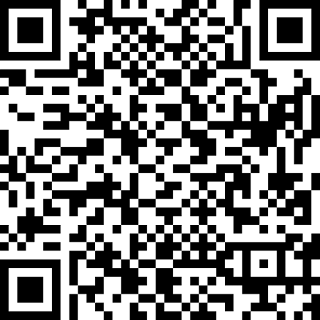In this blog we will explain how we can create report in odoo 10 (report generate by wizard)
So to to that we have to follow the step blow , we will take payments report as an example
1/ create wizard python file in which we will add all fields that we want to use as filler to generate the report
class paymentsReportWiz(models.TransientModel):
_name = "payments.report.wiz"
_description = "Payments Report"
def get_year_range(self):
year_list = []
for i in range(2015, (fields.Date.from_string(fields.Date.today()).year)+5):
year_list.append((str(i), str(i)))
return year_list
target_move = fields.Selection([('posted', 'All Posted Entries'),
('all', 'All Entries')], string='Target Moves', required=True, default='posted')
year = fields.Selection(get_year_range, string='Year', default=str(fields.Date.from_string(fields.Date.today()).year))
_name = "payments.report.wiz"
_description = "Payments Report"
def get_year_range(self):
year_list = []
for i in range(2015, (fields.Date.from_string(fields.Date.today()).year)+5):
year_list.append((str(i), str(i)))
return year_list
target_move = fields.Selection([('posted', 'All Posted Entries'),
('all', 'All Entries')], string='Target Moves', required=True, default='posted')
year = fields.Selection(get_year_range, string='Year', default=str(fields.Date.from_string(fields.Date.today()).year))
@api.multi
def print_report(self):
"""
function to print the report
"""
data = {}
move_ids = self.get_move_ids()
data['year'] = self.year
data['move_ids'] = move_ids
return self.env['report'].with_context({'portrait': 1}).get_action(self, 'module_name.payments_report_template', data=data)
def get_move_ids(self):
"""
Function to retrun moves base on selected moves type
"""
move_object = self.env['account.move']
move_ids = []
if self.target_move == 'posted':
move_ids = move_object.search([('state','=','posted')])
else:
move_ids = move_object.search([])
return move_ids.ids
class PaymnetsReportDetails(models.AbstractModel):
_name = "report.module_name.payments_report_template"
@api.model
def render_html(self, docids, data=None):
"""
function to render the report
"""
docids = docids
current_company = self.env.user.company_id
data['current_company'] = current_company
return self.env['report'].render('module_name.payments_report_template', data)
def print_report(self):
"""
function to print the report
"""
data = {}
move_ids = self.get_move_ids()
data['year'] = self.year
data['move_ids'] = move_ids
return self.env['report'].with_context({'portrait': 1}).get_action(self, 'module_name.payments_report_template', data=data)
def get_move_ids(self):
"""
Function to retrun moves base on selected moves type
"""
move_object = self.env['account.move']
move_ids = []
if self.target_move == 'posted':
move_ids = move_object.search([('state','=','posted')])
else:
move_ids = move_object.search([])
return move_ids.ids
class PaymnetsReportDetails(models.AbstractModel):
_name = "report.module_name.payments_report_template"
@api.model
def render_html(self, docids, data=None):
"""
function to render the report
"""
docids = docids
current_company = self.env.user.company_id
data['current_company'] = current_company
return self.env['report'].render('module_name.payments_report_template', data)
2/ create the wizard form view file , as bellow
<?xml version="1.0" encoding="utf-8" ?>
<odoo>
<data>
<!-- """Create Wizard View""" -->
<record id="view_payments_report_wiz_form" model="ir.ui.view">
<field name="name">payments.report.wiz.form</field>
<field name="model">payments.report.wiz</field>
<field name="arch" type="xml">
<form >
<sheet>
<group colspan="4" col="4">
<field name="target_move" widget="radio"/>
<field name="year" required="1"/>
</group>
<footer>
<button name="print_report" string="Print" type="object" default_focus="1" class="oe_highlight"/>
<button string="Cancel" special="cancel"/>
</footer>
</sheet>
</form>
</field>
</record>
<odoo>
<data>
<!-- """Create Wizard View""" -->
<record id="view_payments_report_wiz_form" model="ir.ui.view">
<field name="name">payments.report.wiz.form</field>
<field name="model">payments.report.wiz</field>
<field name="arch" type="xml">
<form >
<sheet>
<group colspan="4" col="4">
<field name="target_move" widget="radio"/>
<field name="year" required="1"/>
</group>
<footer>
<button name="print_report" string="Print" type="object" default_focus="1" class="oe_highlight"/>
<button string="Cancel" special="cancel"/>
</footer>
</sheet>
</form>
</field>
</record>
3/ create the report template as bellow
<?xml version="1.0" encoding="utf-8" ?>
<odoo>
<!-- ...Define Template... -->
<template id="payments_report_template">
<t t-call="report.html_container">
<div class="page">
<b style="font-size:24px;">
<span t-esc="current_company.name"/>
</b>
<b style="float:right;font-size:24px;color:#3a5d9c">
Payments Report
</b>
<odoo>
<!-- ...Define Template... -->
<template id="payments_report_template">
<t t-call="report.html_container">
<div class="page">
<b style="font-size:24px;">
<span t-esc="current_company.name"/>
</b>
<b style="float:right;font-size:24px;color:#3a5d9c">
Payments Report
</b>
</div>
</t>
</template>
</t>
</template>
<report
id="payments_report_action"
string="Payments Report"
model="account.move.line"
report_type="qweb-html"
name="module_name.payments_report_template"
menu="False"
/>
</odoo>
id="payments_report_action"
string="Payments Report"
model="account.move.line"
report_type="qweb-html"
name="module_name.payments_report_template"
menu="False"
/>
</odoo>







